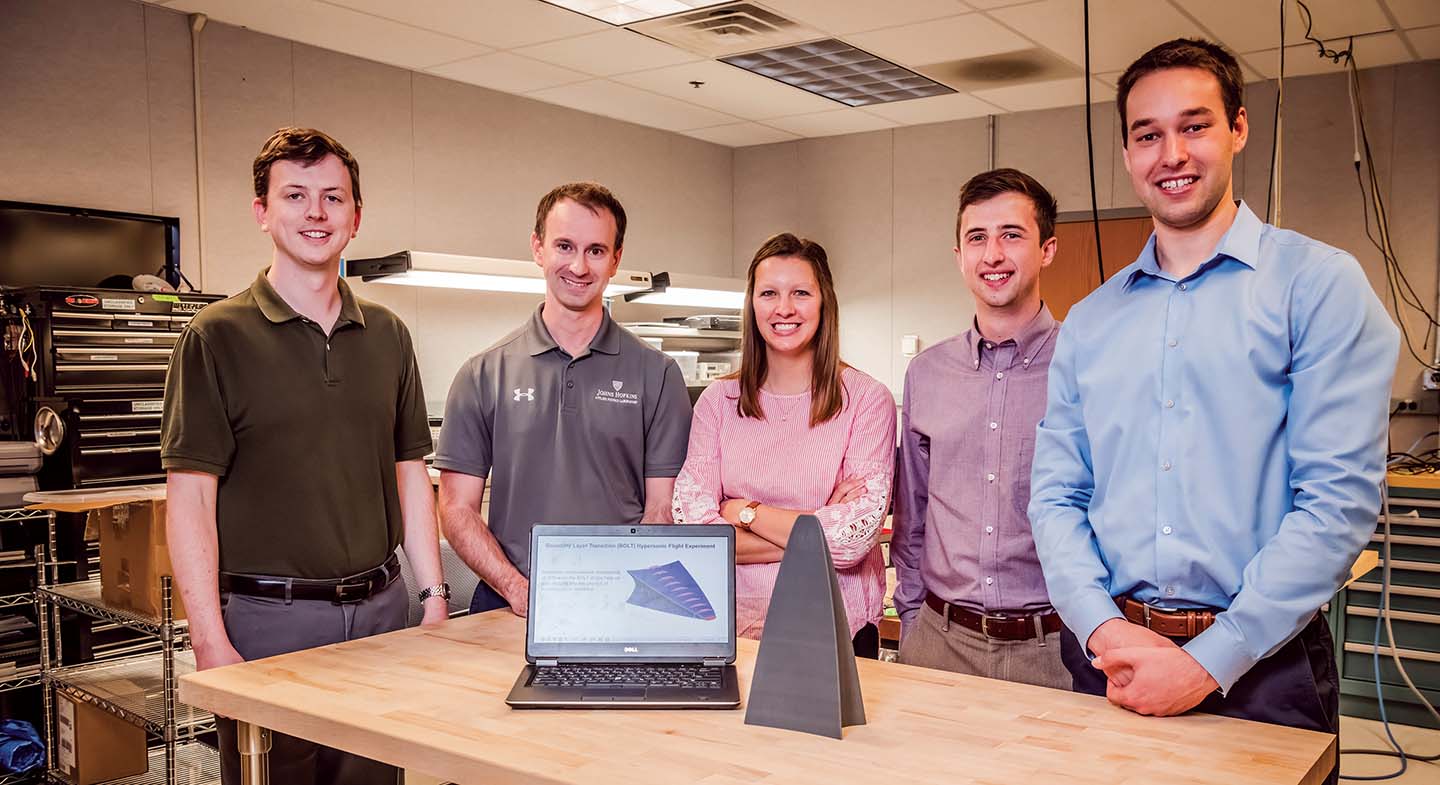Press Release
No Boundaries: Hypersonic BOLT Experiments
Brad Wheaton and a team in the Precision Strike Mission Area of the Force Projection Sector are tackling a challenge that is critical to hypersonics: accurately predicting the state of the boundary layer, or the thin layer of air near the surface of these incredibly fast-moving vehicles.
Hypersonic vehicles move fast — faster than five times the speed of sound, or Mach 5. Being able to pinpoint boundary layer transition — whether the air around the surface of a hypersonic vehicle is laminar (moving in a smooth, straight line) or turbulent (swirling in circles, and up to eight times the heat transfer) — is critical for determining what materials to use when designing hypersonic aircraft and missiles.
Figuring out where boundary layer transition occurs also helps better predict vehicle controllability and aerodynamic drag. However, multiple factors — including vehicle shape, speed and altitude — make identifying boundary layer transition extremely difficult.
Enter Wheaton and his team at the Johns Hopkins University Applied Physics Laboratory (APL). After being awarded a research grant from the Air Force Office of Scientific Research, the team set out to advance the knowledge of boundary layer transition physics through so-called Boundary Layer Transition (BOLT) experiments.
“In recent years, transition has been studied in simple conical shapes and used to develop new physics-based transition prediction tools,” said Wheaton. “The idea behind BOLT is to apply these state-of-the-art tools to a new more complex geometry, where the physics of transition is not yet known.”
To achieve this, the team is conducting computational analyses and wind-tunnel tests to characterize boundary layer transition on the geometry over the course of the next three years, culminating with a test to measure boundary layer transition in hypersonic flight.
With BOLT, Wheaton and fellow APLers Dennis Berridge and Thomas Wolf lead a diverse multi-organizational team that includes some of the nation’s top academic, commercial and government research groups, including the University of Minnesota, Purdue University, Texas A&M University, CUBRC, NASA Langley, the Air Force Research Laboratory and VirtusAero. They are also supported by Air and Missile Defense Sector staff members who are predicting in-flight temperatures during the experiment, and the Research and Exploratory Development Department’s Advanced Mechanical Fabrication Group and machine shop, where wind-tunnel models and the flight experiment hardware are being built.
The BOLT effort also features graduate students from around the country, said Wheaton, adding that several of these students joined APL as interns during summer 2018 to analyze data and help design the flight experiment. The interns also had an opportunity to work on other projects to see firsthand how scientific knowledge can be used in the design of real-world systems.
Wheaton hopes the cross-collaborative BOLT experiment will help APL and the greater hypersonics community gain important knowledge they can use to improve prediction of boundary layer transition on future hypersonic vehicles.
BOLT is an example of APL’s role as a trusted partner between academia and research and the government — taking research and turning it into a concept by designing, prototyping and engineering to make science a reality.
